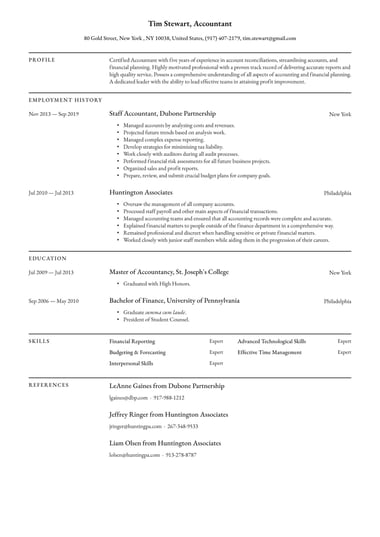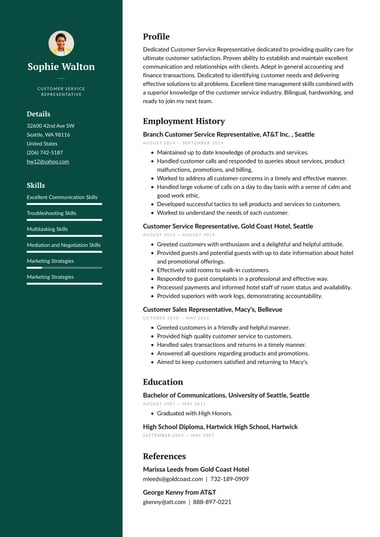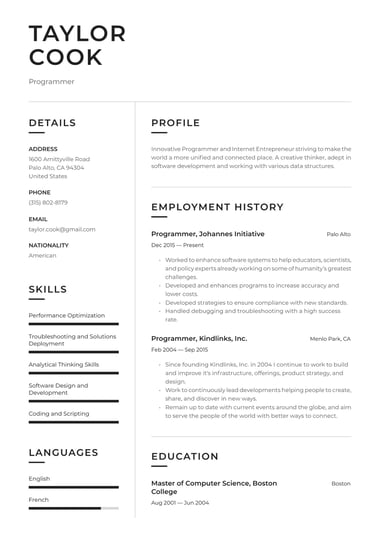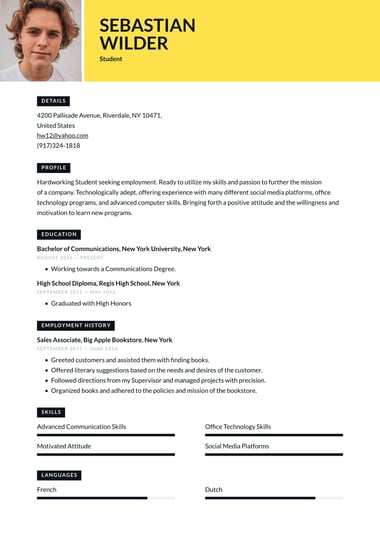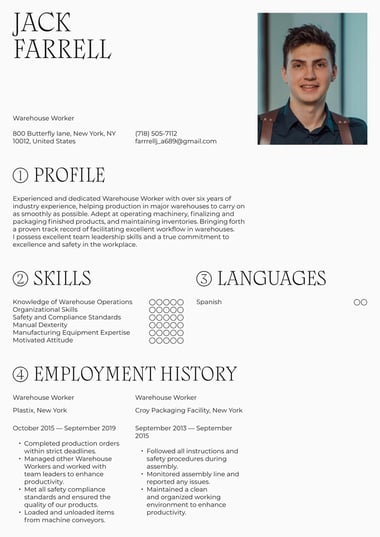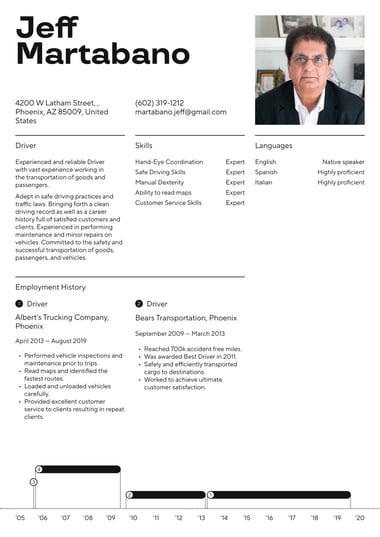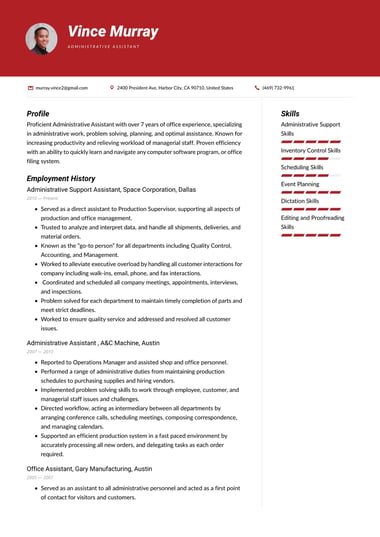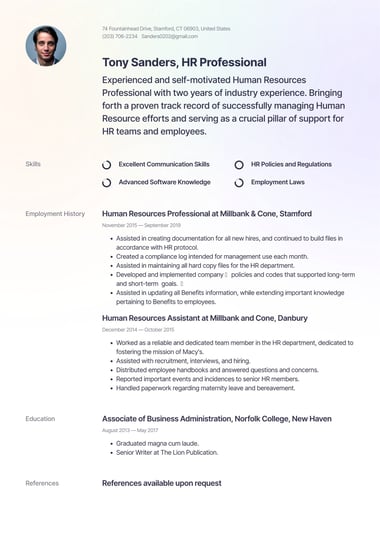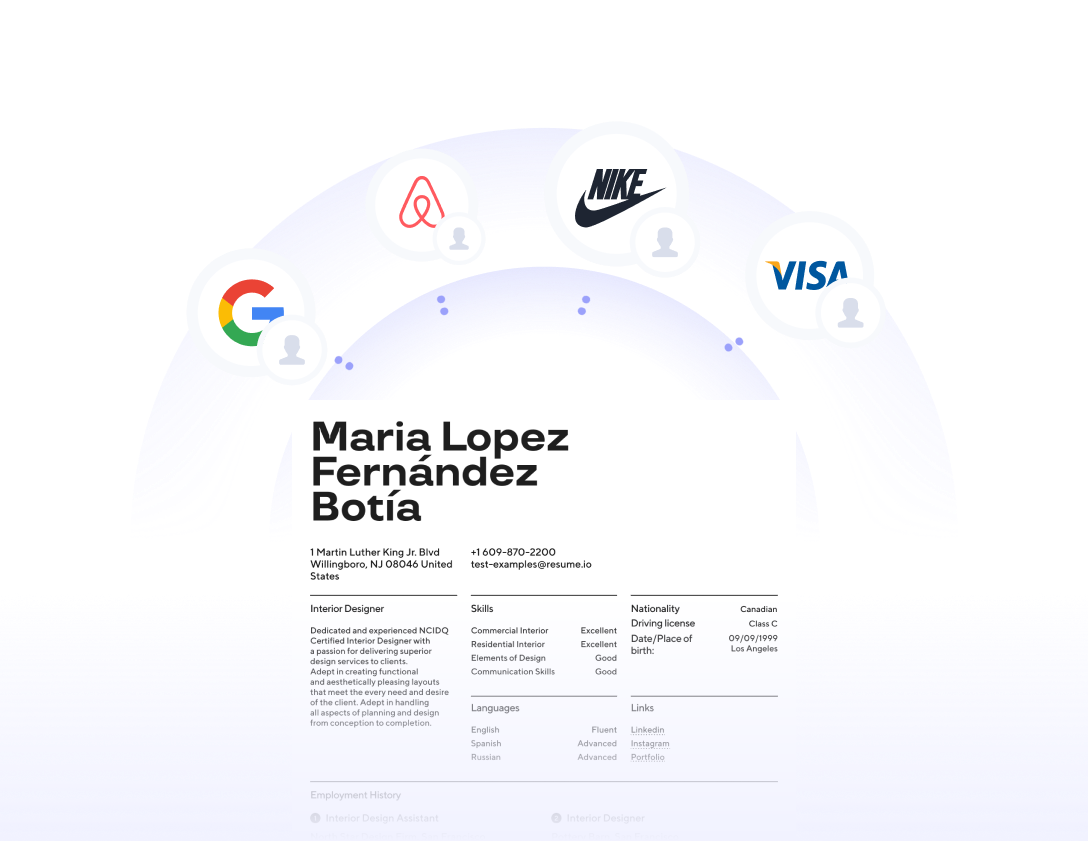Should resumes be single-column?
Choosing between a one or two-column resume usually depends on your personal circumstances, but resumes are typically single-column to ensure readability and compatibility with Applicant Tracking Systems (ATS).
A single-column format presents information in a clear, easy-to-follow structure, making it more accessible for hiring managers and automated systems to review.
However, if you’re in a creative field or have a lot of varied experience, a well-designed two-column resume can help highlight your skills, education, and achievements more effectively.
Other situations where a single-column resume might be preferred include:
- You’re a new graduate looking for an entry level position: a single-column resume puts your education and skills at the, top where they’ll be read first.
- You’re applying online: the formatting of a single-column resume tends to be more compatible with various operating systems and applicant tracking systems (ATS).
- You want to make it easier for a hiring manager: many hiring managers are used to a one-column format and can skim them quickly to find the information they need
- You work in a more traditional field: industries that favor a more traditional resume format, such as healthcare, finance, business, or education, will expect a single-column resume.
- You don’t have extensive experience: a one-column resume will work well for someone with minimal to moderate work experience.
- You like the one-column format: personal preference is a perfectly valid reason to choose a single-column resume.
Pros and cons of a one-column resume
While a one-column resume is a solid, straightforward choice with which to showcase your experience and skills, it’s important to take a minute to look at the pros and cons so you can make the best choice.
Pros
- Visually effective: a one-column resume is easy for recruiters to read and follow.
- ATS friendly: a one-column format is easy to scan, so it works well with Applicant Tracking Systems (ATS).
- Content focused: a one-column format is ideal for more traditional industries because it places the emphasis on your background and skills rather than design.
- More compatible with other systems: a one-column format is less likely to be altered or distorted when opened by the hiring manager.
Cons
- Limited space: a one-column format may have less space for showcasing skills and experiences, especially for a one-page resume.
- Less visually engaging: compared to multi-column designs, a one-column format may not stand out.
- Might require strategic formatting: it can be challenging to fit all necessary information.
- Lacks flexibility: one column formats are almost exclusively reverse-chronological, and some job hunters might require advanced formatting options or more flexibility for including important information.
Job-specific example single-column resumes
To help you decide which format is right for you, here are a few examples of single-column resume formats that are available in the Resume Builder.
London template
Simple, streamlined format that puts the emphasis on your skills and experience. Great for careers such as a payroll manager, who want to put content first.
Moscow template
Classic resume with high readability and an emphasis on white space. Excellent for professionals who put emphasis on substance and experience.
Prague template
With a hint of eye-catching color, this clean one-column resume offers educators and other professionals the opportunity to place a spotlight on their skills.

